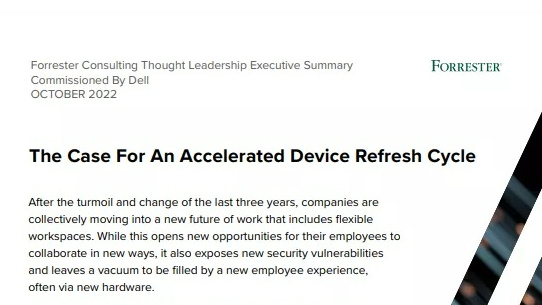The importance of effective collaboration
Effective collaboration depends on providing the right tools and environment


Highly effective organisations really value effective collaboration. But it's not just about removing office walls and going open plan; there is a balance to be achieved as not all employees work well in such an open environment.
Nowadays, the emphasis is more on allowing employees to collaborate whenever and wherever they need to. Sometimes, you need to get your head down away from colleagues for brain space to complete that vital project.
So what are the most important ways to collaborate in an effective manner?
Failure to promote successful communication and collaboration internally is costly. Enterprises are spending on average $8.1 million on unified communications and collaboration technologies and services, hoping that business productivity is enhanced, according to Lyndsay Cook, senior vice president of Marketing and Product, EMEA and Asia at PGi.
"It's been proven that enterprises with highly-effective internal communications offer 47% higher returns to shareholders. So, clearly, UC&C is on the rise and businesses are becoming more productive and deriving value from their investments," he says.
"In contrast, although it is clear that communications are vital, a failure to promote successful communication and collaboration internally is costly. Organisations lose approximately $37 billion yearly due to poor workplace communication."
Consider collaboration needs
Get the ITPro daily newsletter
Sign up today and you will receive a free copy of our Future Focus 2025 report - the leading guidance on AI, cybersecurity and other IT challenges as per 700+ senior executives
Before investing in new technology for your business, ask whether you truly need it, what it can do and if it's feasible long-term.
"Naturally, these are obvious, but many IT and business leaders don't actually consider this. For instance, what are the characteristics of your team? Are they baby boomers? Millennials? What are their collaborative personality types?" says Cook.
Organisations may also need to understand how their business operates. Is it entirely office-based or virtual?
"Once these questions are answered, and you have a better idea of your organisational need, you can begin to develop a business case for UC&C and then review your technology and feature requirements," say Cook.
Drive adoption of pioneering technology
As mainstream collaboration becomes more digital, we'll see the tech heads' spearhead completely new ways of working together, using technologies like AI and VR, says Rashid Ajami, founder and CEO of Campus Society.
"These might stem from the gaming industry but they're now starting to impact the world of business too. Adoption will accelerate, as businesses explore new ways to boost employee engagement (through gamification of objectives and tasks) and creativity (visualising and interacting with creative ideas and concepts)," he says.
Adopt tools that work in a natural environment
Communication technology today is driven by consumers: FaceTime, SnapChat and Skype. Employees want that type of functionality in their workplace, especially if their workplace is the home or based around their ubiquitous mobile device. If you can FaceTime your grandmother with one click, why do you need a long dial string to connect to your boardroom?
"A large fraction of lost productivity time is a result of technical complications setting-up, managing, administering and securing communications and collaboration processes," says Andy Nolan, VP for UK, Ireland and Northern Europe at Lifesize. "Now more than ever, platforms and tools must be as painless and friction-free as possible for employees to embrace them, for the productivity benefit to be fully realised, and to realise maximum ROI for management."
Reduce the number of tools being used
So, while the consumerisation of communication technology gives us a lot of options and certainly has established a model for simplicity and ease of use, it also has resulted in a crowded and complicated range of tools that IT management must deal with.
According to a study by Frost & Sullivan, 80% of employees use non-approved tools and apps at work. The result is a lack of company-wide collaboration, redundant functionality, administration confusion and security risks.
"Adding more tools in an ad hoc way leads to user frustration, siloed work environments and a significant increase in administration costs. Sure, it's tempting for a worker to use the newest IM app his teenage daughter is raving about at work, but each new addition adds a new level of complexity and potential risk that must be controlled," says Nolan.
He adds that if there is one reason to manage the number and types of collaboration tools in use at a company, it's security.
"Security needs to be strategically planned, to be baked in from the start. A standardised set of IT programmes allows you to take back control of your programmes, enhancing security and streamlining communication within your organisation. But it must be done without being overly restrictive or disruptive to the end user," he says.
Measure everything
Changes in collaboration ultimately change the way we work which means we need to change how we're measured, how we're perceived and how success' is benchmarked. A lot of this will be less tangible how valued employees feel, how productive they're being but the fact that a lot of this transformation is digital' means that more can be measured.
"Big data and analytics will continue to be powerful measurement resources to track progress of new ways of working and inform the decisions that are made," says Ajami.
Rene Millman is a freelance writer and broadcaster who covers cybersecurity, AI, IoT, and the cloud. He also works as a contributing analyst at GigaOm and has previously worked as an analyst for Gartner covering the infrastructure market. He has made numerous television appearances to give his views and expertise on technology trends and companies that affect and shape our lives. You can follow Rene Millman on Twitter.
-
 Should AI PCs be part of your next hardware refresh?
Should AI PCs be part of your next hardware refresh?AI PCs are fast becoming a business staple and a surefire way to future-proof your business
By Bobby Hellard
-
 Westcon-Comstor and Vectra AI launch brace of new channel initiatives
Westcon-Comstor and Vectra AI launch brace of new channel initiativesNews Westcon-Comstor and Vectra AI have announced the launch of two new channel growth initiatives focused on the managed security service provider (MSSP) space and AWS Marketplace.
By Daniel Todd
-
 'Digital hide-and-seek': Workers are wasting hundreds of hours a year sourcing the information they need to carry out their role
'Digital hide-and-seek': Workers are wasting hundreds of hours a year sourcing the information they need to carry out their roleNews Knowledge workers globally are wasting a quarter of their working week tracking down information, new research from Atlassian has revealed.
By George Fitzmaurice
-
 Untethered: How CIOs and CISOs are paving the way for the new hybrid workforce
Untethered: How CIOs and CISOs are paving the way for the new hybrid workforceWhitepaper Effective techniques to transition from exposed legacy infrastructure to an effective zero trust strategy
By ITPro
-
 Unlocking the power of your digital services
Unlocking the power of your digital servicesSponsored Businesses have invested significant cash into technology since COVID-19, but are they really getting their money's worth?
By ITPro
-
 Delivering fast and secure digital experiences for the modern hybrid workforce
Delivering fast and secure digital experiences for the modern hybrid workforceWhitepaper A new approach to digital experience monitoring that can monitor the health of all systems
By ITPro
-
 Collaboration is the glue that holds your business together
Collaboration is the glue that holds your business togetherSPONSORED A combination of productivity tools and cloud telephony can enable the best from your workforce
By ITPro
-
 The future of work and the forgotten workforce
The future of work and the forgotten workforcewhitepaper How to deploy a mobile-first strategy so no one gets left behind
By ITPro
-
 The case for an accelerated device refresh cycle
The case for an accelerated device refresh cycleWhitepaper Achieving a more cost-effective device lifecycle overall
By ITPro
-
 Employees are choosing how they work
Employees are choosing how they workWhitepaper And with the right secure digital strategy, this could be a great thing for your business: today and far into the future
By ITPro